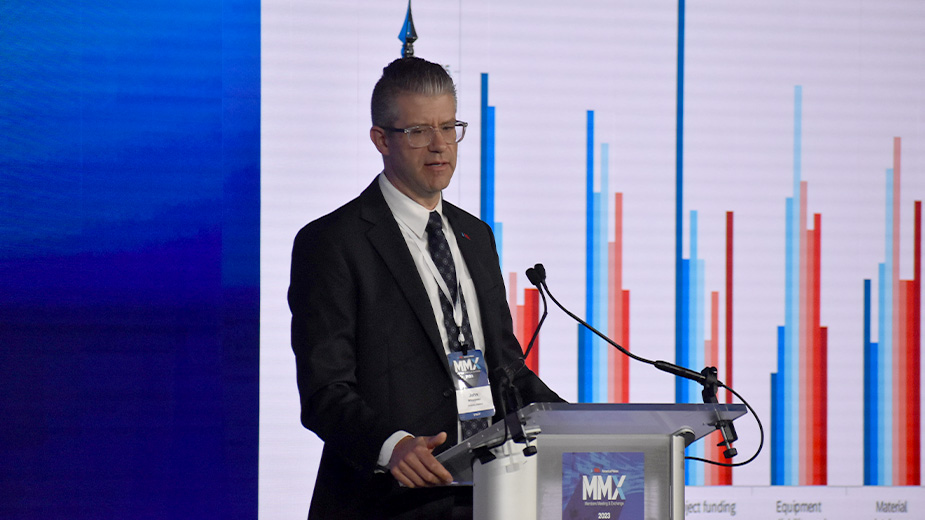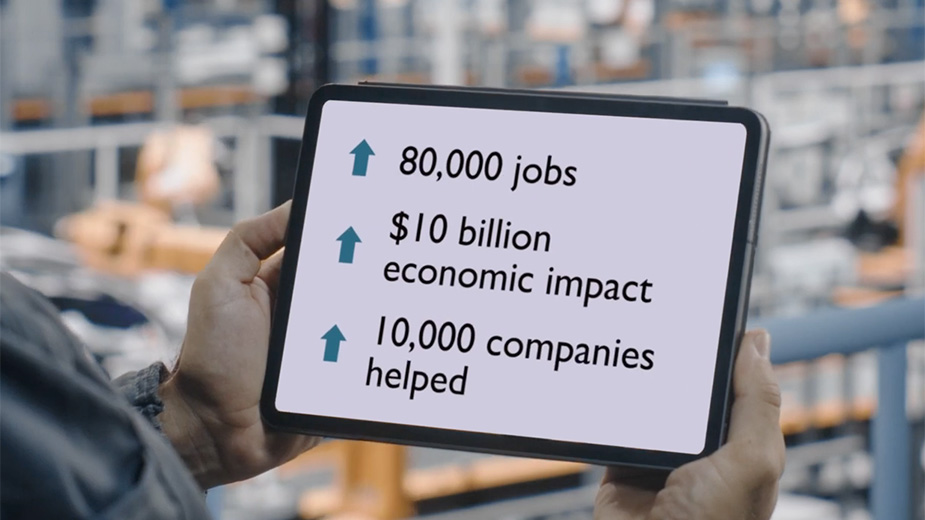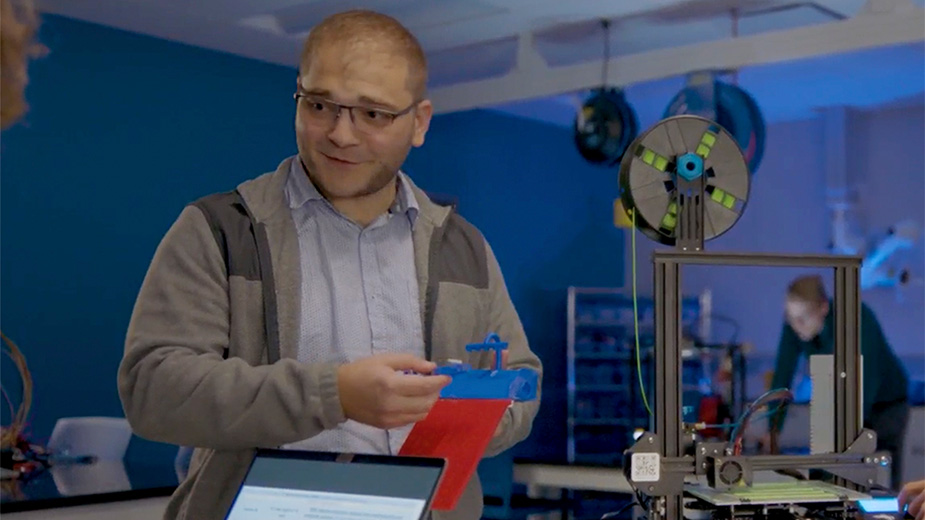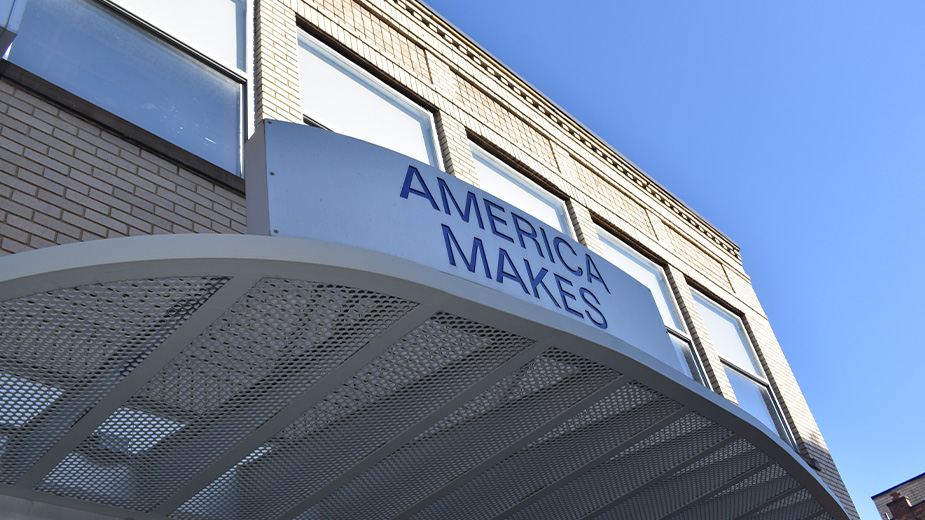America Makes Highlights Collaboration, Workforce at Members Meeting
CANFIELD, Ohio – Efforts to promote collaboration and bring new talent into additive manufacturing highlighted the morning session of America Makes’ two-day Members Meeting & Exchange event, or MMX.
About 350 representatives of companies in additive manufacturing and related fields registered for the conference, which is being held at Waypoint 4180. The event itself was designed to offer longer breaks to provide greater opportunities for networking, said John Wilczynski, executive director of the Youngstown-based additive manufacturing hub.
“One of the things that we’re realizing more and more every day is that there is too much to be done that anyone can get done,” he said.
America Makes’ mission of increasing adoption of additive manufacturing grows bigger every year, and the takeaway from many of the responses to questions in a recent member survey was “do more of everything,” which can be a challenge when it comes to allocating resources.
“One of the ways that we’re trying to do that is through partnerships and partnering with other organizations who have similar goals who are already working on these things, but where we can bring the interests of our community to these other organizations,” he said.
Much of America Makes’ focus since its inception has been on improving additive manufacturing technology rather than trying to implement it because it hadn’t been ready for implementation into industry, he said. That has changed as the technology has evolved in recent years.
“So now people are trying to adopt it as quickly as they can. But we’re not well positioned to do that, so we’re trying to find new ways to more quickly get to the point of adoption,” he said. “No organization is positioned where they can do it themselves, so we’re trying to create an environment where we’re doing that together and moving as quickly as we can forward.”
America Makes’ roles are to advance the development of additive manufacturing technology development, education and workforce development, but industry needs have changed in the 11 years since America Makes was founded, said Kimberly Gibson, America Makes’ ecosystem director.
Gibson moderated a panel discussion focusing on modernizing the defense supply chain with “next-level teaming” and collaboration efforts. Participants in the panel included Samantha Snabes, co-founder of re:3D; Ben DiMarco, additive manufacturing technology leader at The Ohio State University; Teresa Clement, director of university and small business outreach for Raytheon; and Sarah Jordan, CEO of Skuld LLC.
“Our membership is starting to be more complex and more diversified. That’s exciting. And it also presents us with a big challenge. So how do you move from demonstration to deployment? How do you move from investigation to implementation?” Gibson said. “That is the challenge that we find ourselves in. And all of this needs people, so teaming has just never been more important than it is today.”
‘We All Need Each Other’
Clement said she enjoys projects that involve participation by small and large partners, “multiples of possible.”
Startups often aren’t aware of the resources available to them though incubators, pitch competitions and accelerators, re:3D’s Snabes said. The Houston-based social enterprise develops 3D printers that it aims to keep “at the most affordable price point” so they can be used in places such as Nicaragua and can use plastic waste for raw material.
“Additive manufacturing still has a long way to go. And we can’t do it a lot alone. We’re all experts in our niche, and we’re all adjacent, and we all need each other,” she said. Sponsors of pitch competitions often are there to scout for talent or companies to invest in, she added.
“Anytime I submit a proposal to America Makes, we’re trying to find someone new to bring to the table that’s not a member currently,” DiMarco said. Based on his experiences familiarizing others with the organization, he recommended a “quick start guide for new members” that would serve as an “America Makes 101.”
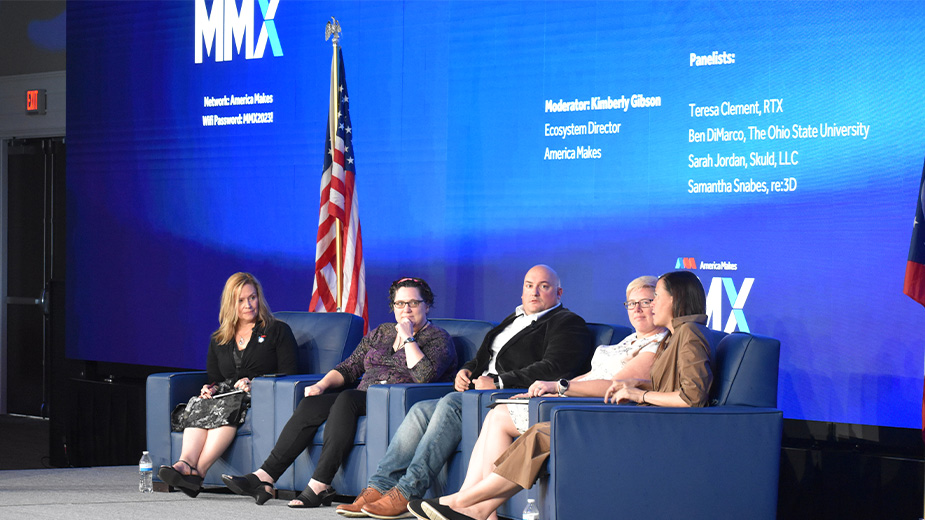
America Makes is also “trying to make sure that we’re considering all of the various types of persons” who need to be educated about and to understand where the opportunities are with new technology, Wilczynski said. That includes a range of “different underrepresented groups,” including formerly incarcerated individuals who are reentering the workforce.
At the same time, there is a “whole new generation” who might know what additive manufacturing or 3D printing is, but doesn’t know anything about manufacturing more broadly, he said. At Oh Wow! The Roger & Gloria Jones Children’s Center for Science & Technology, visitors will be able to experience the “Alice, Engineer in Wonderland exhibit,” which will allow kids to “experience what does it mean to manufacture and create a part.”
In addition, America Makes is kicking off a challenge focused on getting college and university students interested in manufacturing opportunities.
Additive Manufacturing’s Role
Huijuan Dai, next generation materials and processes manager for the U.S. Department of Energy’s Advanced Materials & Manufacturing Technologies Office, or AMMTO, discussed additive manufacturing’s role in her agency’s strategic vision. That includes using additive manufacturing to manufacture wind turbine blades as well as other wind turbine components.
Manufacturing represents 8.5% of the U.S. workforce and more than 11% of national gross domestic product, she said. Factors including the COVID-19 pandemic, the global climate crisis, supply chain disruptions and computer chip shortages all have contributed to changes that are detrimental to the U.S. economy and industry, and will continue to impact everyone.
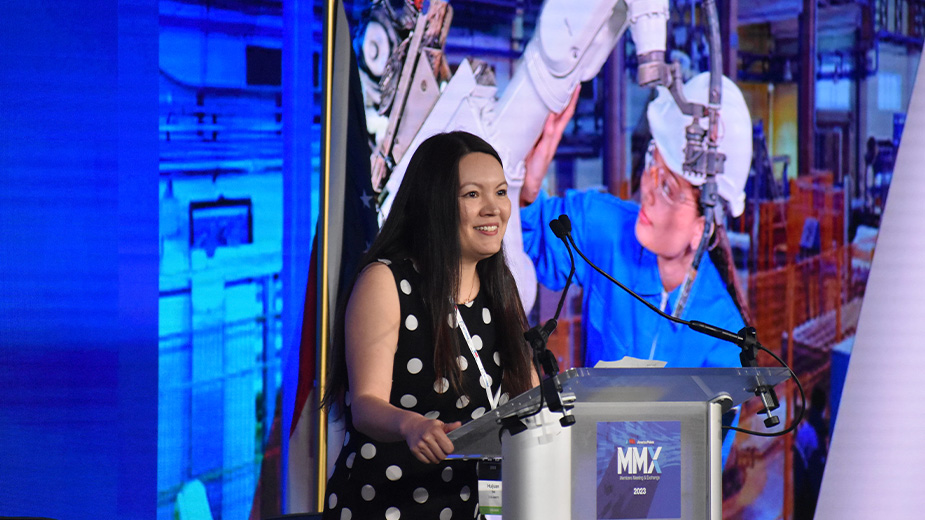
One of two offices organized within DOE last year to address these challenges, AMMTO was created “to rapidly accelerate the mass production and manufacturing of clean energy technology,” while the Industry Efficiency and Decarbonization Office was established to address carbon emissions.
“Work in energy creates this great opportunity to radically accelerate innovation, transform materials and manufacturing in America’s energy future, and also drive industry and economywide decarbonization,” she said.
Lydia Mihalik, director of the Ohio Department of Development, discussed Ohio’s history in innovation and how those efforts are continuing under Gov. Mike DeWine. She singled out manufacturing as a sector that is experiencing “exceptional momentum.”
“In fact, we are bringing the highest tech manufacturing known to man into Ohio, and the world is taking notice. New manufacturing companies are located all over the state. They could have gone anywhere, but they’re choosing Ohio. And that’s because we have embraced advanced manufacturing. And it isn’t just a choice. It is an absolute necessity,” she said.
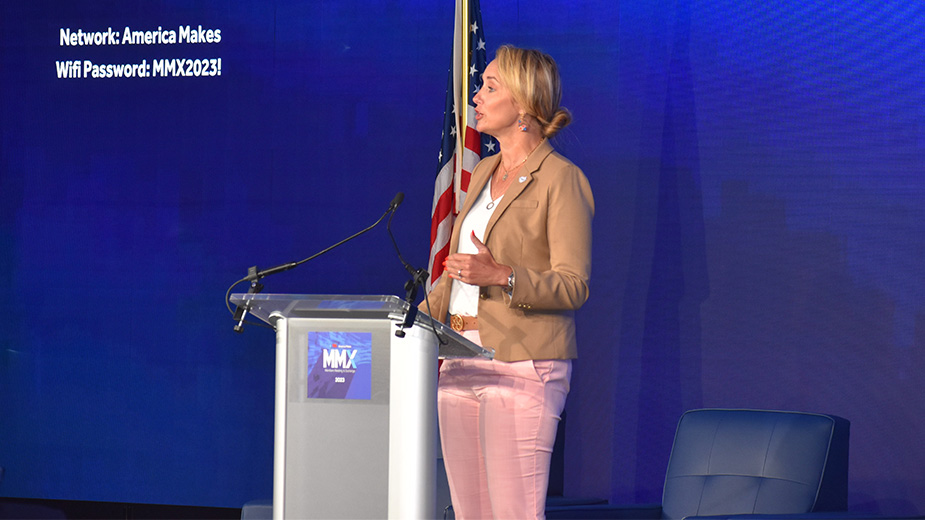
Cities and regions across Ohio have made remarkable strides in fostering innovation ecosystems, Mihalik said. To support that, the new state budget allocated $125 million for innovation hubs, building on existing innovation districts in Cleveland, Cincinnati, and Columbus.
“But there is an opportunity for our innovation economy to grow in smaller regions of our state as well. Innovation hubs will be focused on the capacities that each region has to become a world class competitor in their particular sectors,” she continued. “In Youngstown, the goal is to do advanced additive technologies to help Ohio’s broader manufacturing industry adapt.”
Following her speech, Mihalik said there have been “good discussions” with local leaders regarding a potential innovation hub.
“Collaboration is key, and getting those research institutions together with the private sector and the public sector,” she said.
Projects
Other speakers Tuesday included Steven Wax, assistant defense secretary for science and technology, who was featured in a video recording; Huijuan Dai, U.S. Department of Energy program manager; and Brandon Ribic, America Makes technology director, who announced two new open project calls.
One is focused on powder alloy development for additive manufacturing, and the other is for proliferation of additive manufacturing material datasets. The two requests for proposals, each of which is separated into two topic areas, are worth a combined $11.75 million.
Wilczynski also shared updated metrics for America Makes, which during the most recent fiscal year conducted 77 projects to address technology, education and workforce deployment and ecosystem needs, and deployed $43 million to membership to mature technology. To date, American Makes has managed more than 250 projects over the past decade, including 70 that are active now.
“The main takeaway there is we’re far exceeding the expectation, and that’s ultimately because of all the work that we’re doing with all of you as members,” he said.
‘A Lot of Opportunities’
Among those attending was Rene Cooper. He is additive manufacturing market manager for Airgas in Sarasota Spring, New York, which supplies gases including argon and nitrogen to 3D-printing companies.
“There’s a lot of opportunities, good opportunities,” he said.
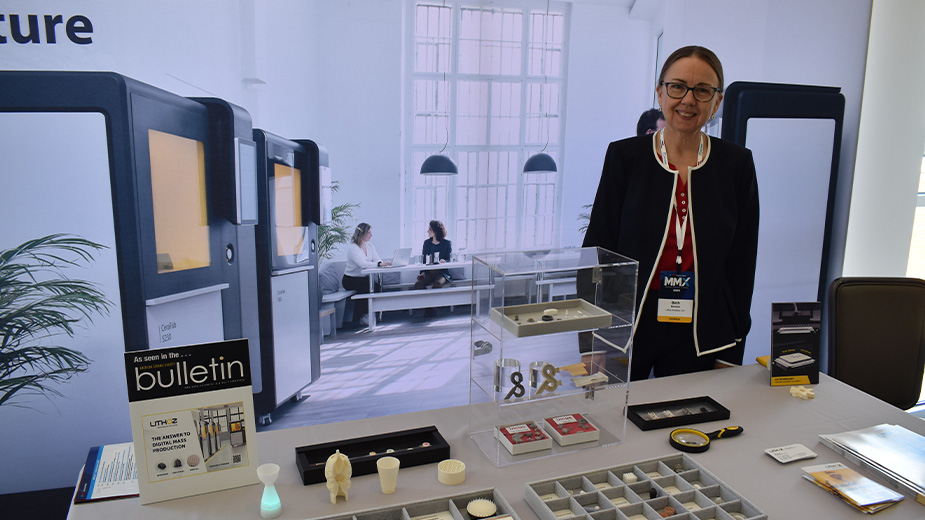
Exhibitors included Lithoz America LLC and Edge Factor Inc.
Based in Troy, New York, Lithoz manufactures 3D printers and materials for advanced ceramic printing. This was the company’s second year participating in MMX, Beth Bornick, business development lead, said.
“High-temperature environments are good for ceramics – environments where there’s, say, high abrasion of a part or surface,” she said. “At an additive manufacturing conference, there’s going to be some small amount of applications where you can’t solve the problem with metals or plastics, and that’s where ceramics come in.”
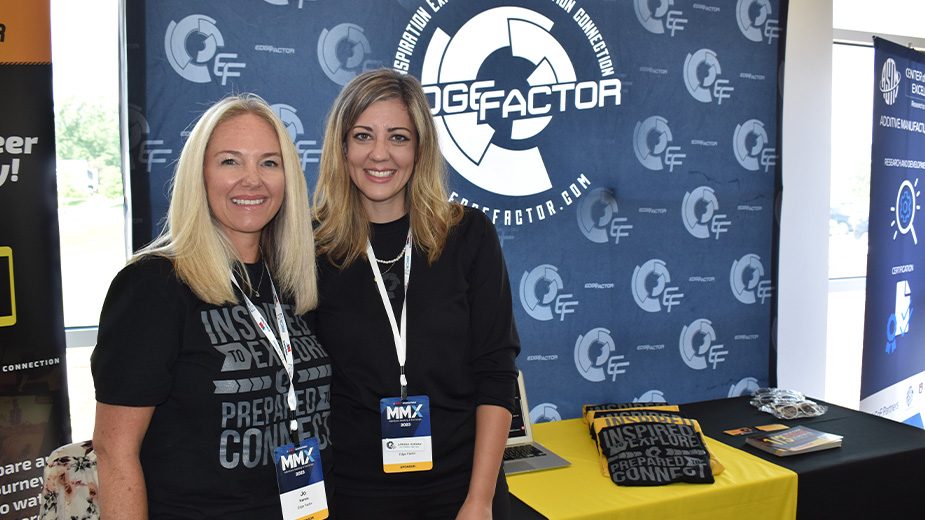
Edge Factor, which has offices in New York and Ontario, is “kind of like the Netflix for workforce development,” Larissa Hofman, vice president, said. In partnership with America Makes, the company has produced a “suite of tools” to promote additive manufacturing for school-age and adult learners that will be unveiled at Wednesday’s session.
“Over the last year, we’ve been partnered with America Makes to find high-quality stories to be able to tell” about the additive manufacturing field, Hofman said. The company has produced about 40 multimedia tools that can be used “to really raise up the next generation of additive manufacturers,” and make both them and their parents aware of the opportunities that exist in the field.
Pictured at top: John Wilczynski, executive director of America Makes.
Copyright 2024 The Business Journal, Youngstown, Ohio.
